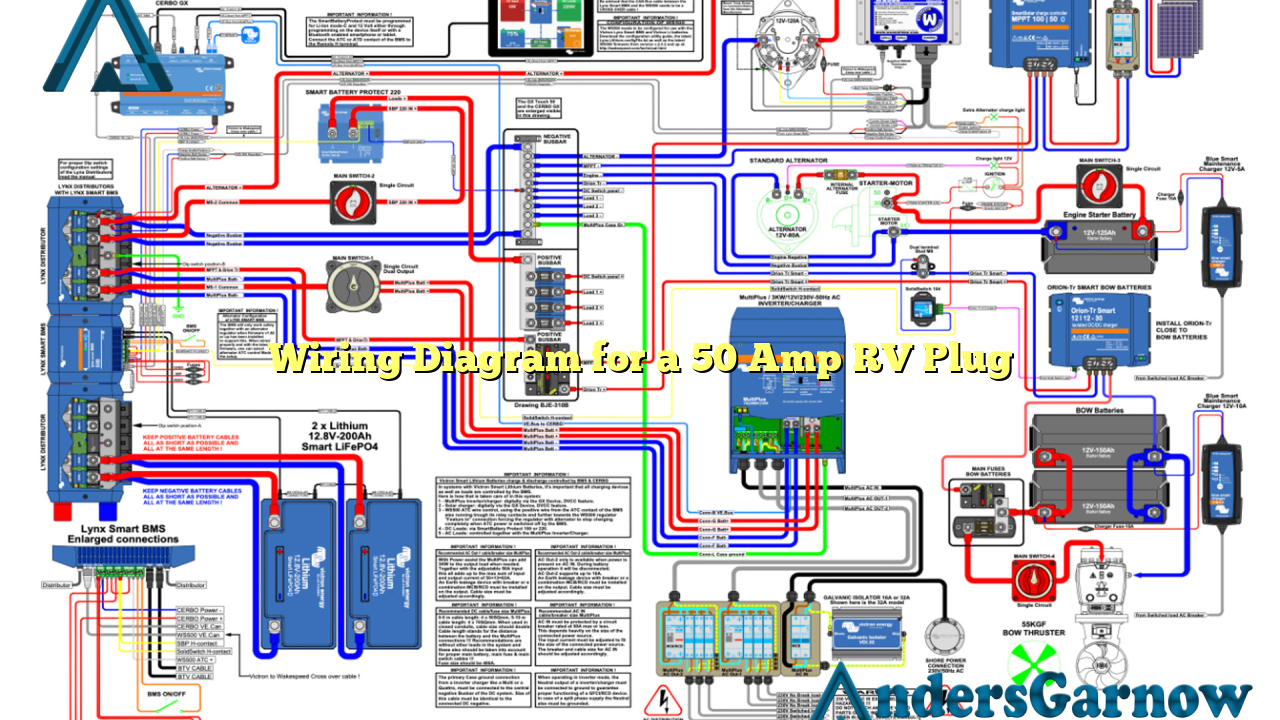Hello, dear readers! Today, we will be discussing the wiring diagram for a 50 amp RV plug. Whether you are a seasoned RVer or just starting out, understanding the wiring of your RV plug is crucial for a safe and efficient power connection. In this article, we will provide you with a detailed guide on how to wire a 50 amp RV plug, its advantages, disadvantages, alternative options, and a comprehensive table containing all the necessary information. So, let’s dive in!
1. Understanding a 50 Amp RV Plug
Before we jump into the wiring details, let’s first understand what a 50 amp RV plug is. A 50 amp RV plug is a power outlet specifically designed to provide a higher electrical capacity for larger RVs, motorhomes, or trailers. It consists of four prongs – two hot wires, one neutral wire, and one ground wire – that ensure a stable and safe power connection.
2. Wiring a 50 Amp RV Plug
Wiring a 50 amp RV plug requires some basic knowledge of electrical systems and safety precautions. Here is a step-by-step guide to help you with the wiring process:
- Turn off the power supply to the RV.
- Locate the 50 amp RV plug on your RV.
- Remove the cover of the plug.
- Identify the hot wires (usually black and red), neutral wire (usually white), and ground wire (usually green or bare copper).
- Strip off the insulation from the wires.
- Connect the hot wires to the corresponding terminals on the plug, ensuring a secure connection.
- Connect the neutral wire to the neutral terminal.
- Connect the ground wire to the ground terminal.
- Double-check all connections and tighten any loose screws.
- Securely attach the plug cover.
Remember, if you are not confident in your electrical skills, it is always recommended to seek professional assistance to ensure a safe and correct installation.
3. Advantages of a 50 Amp RV Plug
A 50 amp RV plug offers several advantages over lower amp options. Here are some benefits:
- Higher Electrical Capacity: A 50 amp RV plug provides more power, allowing you to run multiple appliances simultaneously without overloading the circuit.
- Flexibility: With a 50 amp plug, you can connect your RV to various power sources, including 50 amp, 30 amp, or 15 amp outlets, using appropriate adapters.
- Future-Proofing: Investing in a 50 amp RV plug ensures compatibility with larger RVs or future upgrades, saving you from the hassle of rewiring.
These advantages make a 50 amp RV plug a popular choice among RV enthusiasts looking for a reliable power connection.
4. Disadvantages of a 50 Amp RV Plug
While a 50 amp RV plug offers numerous benefits, it also has a few drawbacks to consider:
- Cost: Compared to lower amp options, a 50 amp RV plug and its associated wiring can be more expensive.
- Power Consumption: Running appliances simultaneously on a 50 amp circuit can consume a significant amount of power, potentially leading to higher utility costs.
- Compatibility: Not all RV parks or campgrounds provide 50 amp service, limiting your options for power hookup in certain locations.
Understanding these disadvantages can help you make an informed decision based on your specific needs and budget.
5. Alternative Options
If a 50 amp RV plug is not suitable for your RV or camping needs, there are alternative options available:
- 30 Amp RV Plug: A 30 amp RV plug is a common alternative, providing sufficient power for most RVs and motorhomes.
- 15 Amp RV Plug: A 15 amp RV plug is the most basic option, suitable for small trailers or minimal power requirements.
When choosing an alternative option, consider the power requirements of your RV and the availability of power sources at your desired camping locations.
| Wire Color | Function |
|---|---|
| Black | Hot Wire (Phase A) |
| Red | Hot Wire (Phase B) |
| White | Neutral Wire |
| Green or Bare Copper | Ground Wire |
Conclusion
In conclusion, understanding the wiring diagram for a 50 amp RV plug is essential for a safe and efficient power connection. We discussed the step-by-step process of wiring a 50 amp RV plug, its advantages, disadvantages, alternative options, and provided a comprehensive table of wire colors and functions. Remember to prioritize safety and consult professionals if needed. Happy camping!

